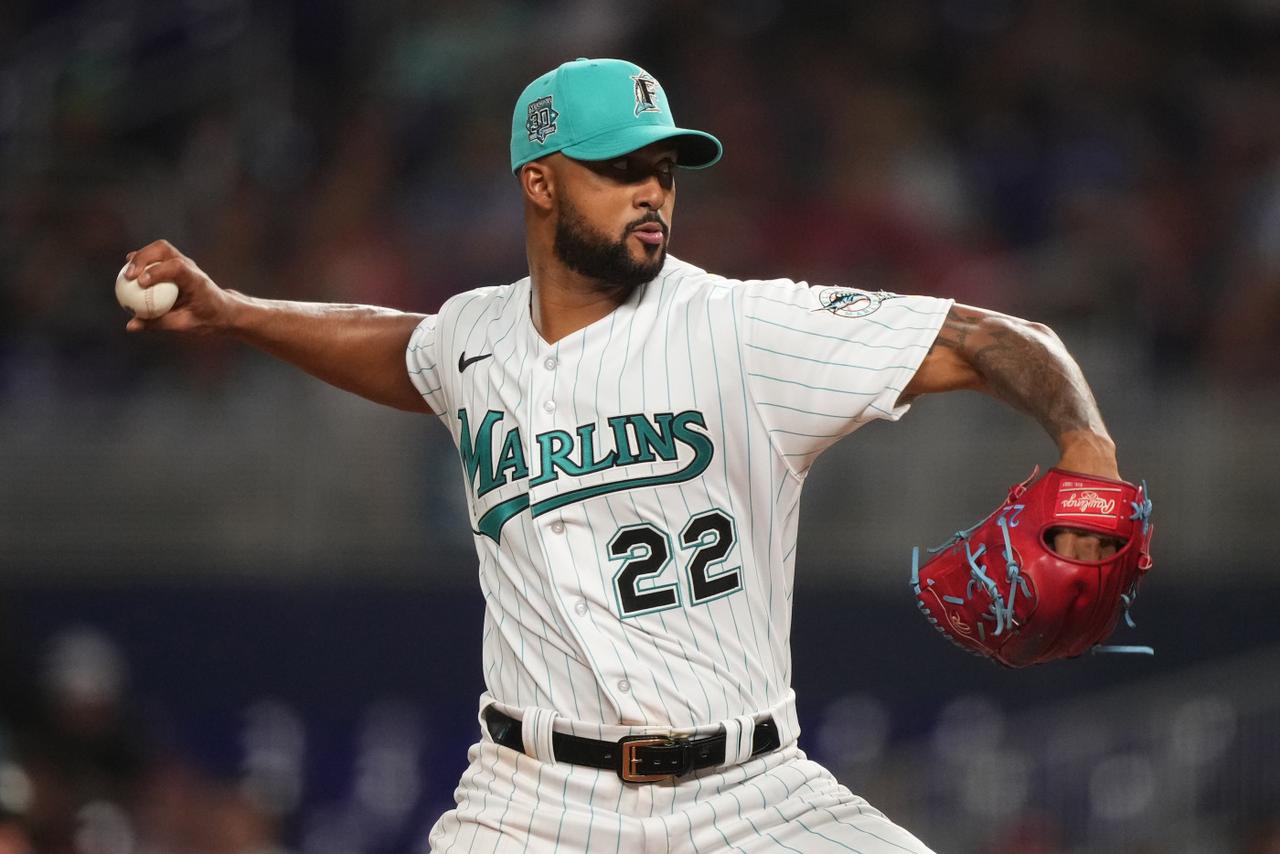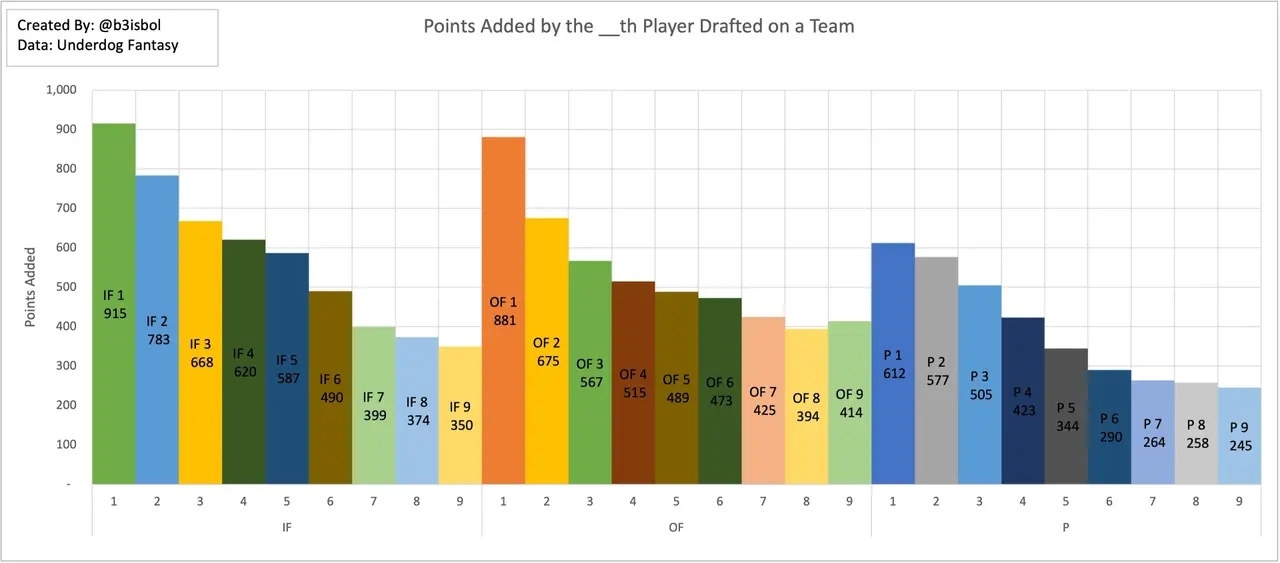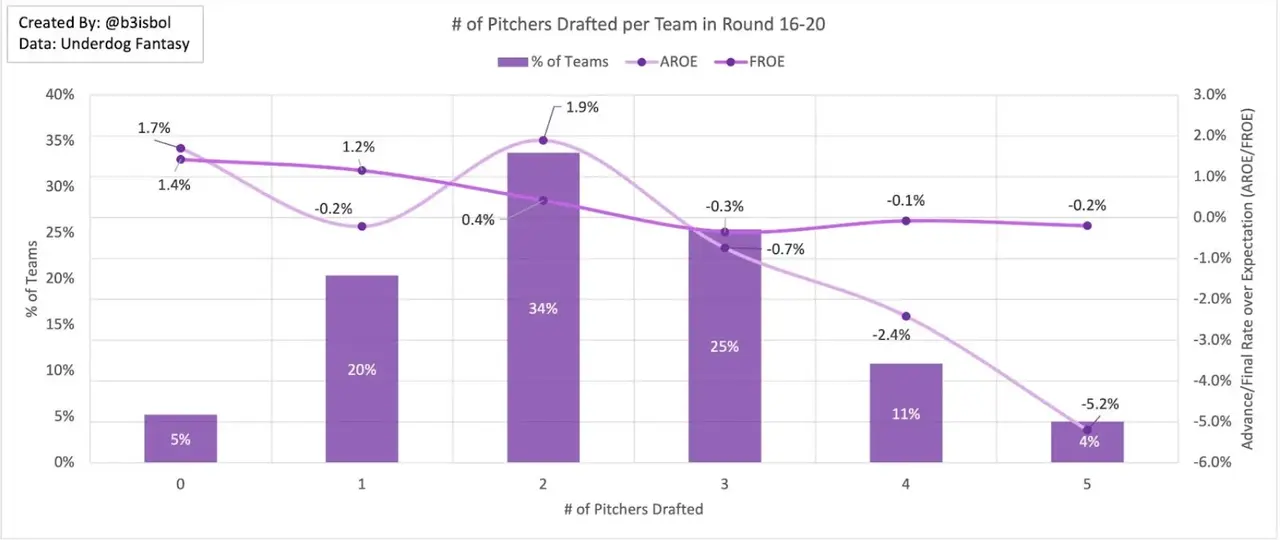Tuma: How to Approach Pitching in the 7th Inning Stretch

On Monday I published 9 thoughts I had on ADP for the 7th Inning Stretch. I initially planned for this to include the entire player pool, but once I started writing up certain topics I realized I couldn't stop, and suddenly that became an infield-outfield article.
This means today we'll focus on pitching, where the strategy goes far beyond merely figuring out who is good and who is bad.
As a reminder, reach out on Twitter @toomuchtuma if you have questions. I've also started a Discord to promote Underdog MLB Best Ball discussion. Reach out as well if you have interest in joining.
Now let's talk pitching!
Tuma: How to Approach Pitching in the 7th Inning Stretch
I'm half-joking when I say it, but we're truly "so early" when it comes to our understanding of how to optimally MLB Best Ball.
I felt we made huge strides this offseason thanks to the data that @b3isbol put together from last year's results in "The Dinger." For the football crowd, you can think of his work as being similar to Mike Leone's "Best Ball Manifesto."
Anyways, one of the findings Chris had is how poorly late-round pitchers performed in 2022. I borrowed his fancy graphs for this article titled "Late-Round Pitchers Are a Trap on Underdog Fantasy."
To me, the findings made intuitive sense. A very popular pitching strategy in managed leagues is to target upside late in drafts. If it works out, then great! If it doesn't then you can drop that pitcher and pick up someone else.
Think about someone like Hayden Wesneski this spring. He was viewed as an upside arm late. If you took him in a managed league you were able to quickly move on. But in Best Ball he's been an anchor.
Managed leagues also have the benefit of streaming, identifying early-season breakouts, and adding top prospects to rosters. Since Underdog players were drafting back in March, we couldn't benefit from the likes of Bobby Miller, Gavin Williams, Eury Perez, etc.
The data (at least from last year) supports the idea that it's risky to rely on late-round arms:

The above graph shows the amount of "points added" by the _th player drafted at a position in 2022. For example, the elite tier of outfielders made a huge difference last season. It's why we saw such a thirst for Round 1 outfielders throughout the winter and spring.
On the far right of the chart are pitchers, who in general score less than infielders and outfielders. This is known, but what this image helps bring to life is how pitching scoring falls off a cliff in the later rounds. Late-round pitchers are the lowest scoring subset in MLB Best Ball.

Here's another graph that helps highlight how weak pitchers are in the end game of drafts. This one shows the AROE (advance rate over expectation) and FROE (finals rate over expectation) of teams who took a certain number of pitchers in rounds 16-20 last season.
Here's how I explained it in my late-round pitchers piece from January:
"As you can see, once you started taking 3+ arms in the final 5 rounds, you were losing EV. Taking 0, 1, or 2 pitchers in this range was optimal. Taking 0 had the best combo of AROE and FROE. Why is this?
We saw before that 5-6 pitcher builds were less likely to advance to the playoffs than 7 or 8 pitcher builds. However, they were more likely to then advance to the finals. We're also seeing that successful teams don't take SPs in the final rounds, and we know that last year the highest scoring arms were taken in the first 8 rounds.
This should give 2023 drafters urgency to stockpile the highest quality pitchers early in drafts, and then ignore the position altogether later on. It'll admittedly create a "fragile" build -- SPs are more likely to get hurt than position players, and they don't score as much.
These fragile rosters also give you access to the best performing teams on Underdog. IF the starters you drafted early stay healthy and you roll into the playoff with 5-6 dominant arms (and you only need to start 3 per week), AND you supplement that with tons of late-round position players, giving you more shots at finding the best starting lineup among the positions that score the most points, then you're live to win it all.
In 2022, the Underdog Best Ball community approached pitching as a quantity problem. "All these late-round arms project the same so I'm going to just take several."
Now we know pitching in this format is a quality problem. You need the best starters come playoffs. Take several in the early-to-mid rounds, and then mostly stop. It's how to avoid the late-round pitcher trap."
As previously mentioned, we're still so early in our understanding of how to optimally draft MLB Best Ball teams on Underdog. We learned a ton this past offseason, and once Chris analyzes this year's data our data set will literally double. We're about to learn so much more.
So we'll see how late-round pitchers performed in '23 sometime in the next 6 months. For now, this is what we have to go off, and I believe there are multiple signs that point us towards wanting to secure high-end arms early.
It isn't about being the first person to take a pitcher. It's about having 4-5 reliable arms through 9 or so rounds. It's about finishing your staff early so that you don't even need to worry about adding anyone post-Round 12.
Due to the condensed schedule in the 7th Inning Stretch, managers should be willing to consider pushing it even more at SP. Take 4 early and then stop, for instance. I wouldn't recommend doing that all the time, but if you're a volume drafter I think it's okay to mix a strategy like that into your portfolio.
There's less time for pitchers to get hurt and we have a better understanding of who is actually performing well this year. It's "risky" to take so many starters early in that you're passing on high-scoring batters. But once you get to the finals you better have the pitching that can compete with other aces.
It's riskier, in my opinion, to pass on aces in the early-to-middle rounds.
Closing Thoughts
The good news for anyone who wants to employ a SP-dominant strategy is current ADP makes it extremely doable.
Think about where wide receivers are going in NFL drafts right now. There are "wide receiver avalanche" rooms where all the best options get taken early, and outside of stacking partners there just isn't a lot of exciting options available late.
In an efficient SP market on UD, I believe we'd see a similar scenario. All the best starters would be taken aggressively, leaving drafters little choice but to join in.
And yet, based on the current market, drafters can load up on SPs in the early to middle rounds and still secure some elite bats along the way.
My full rankings, which were last updated on July 3rd, can be viewed via this Google Sheet.
ADP has changed a little since then, but not dramatically, and the players who were popping as values then still remain targets at cost.